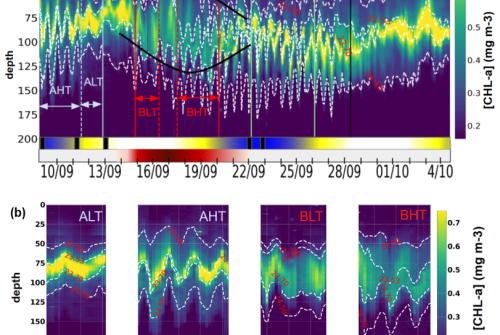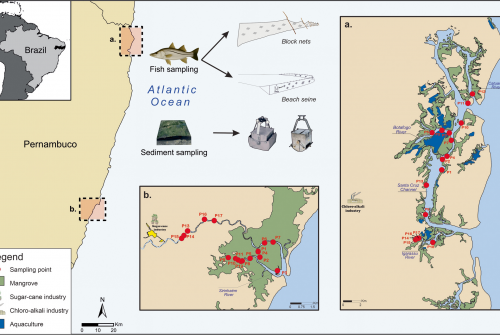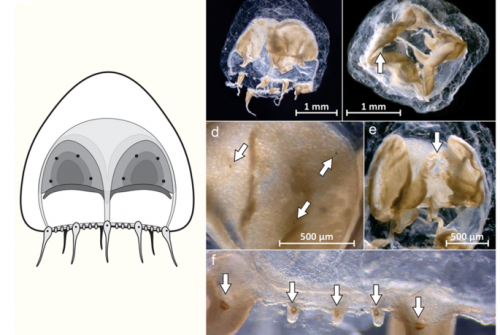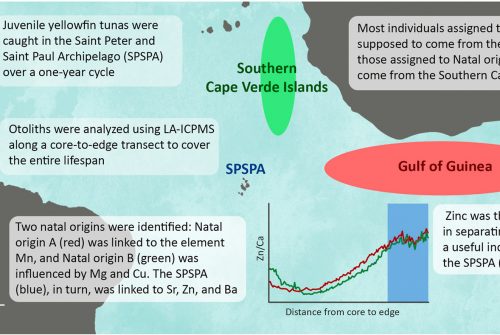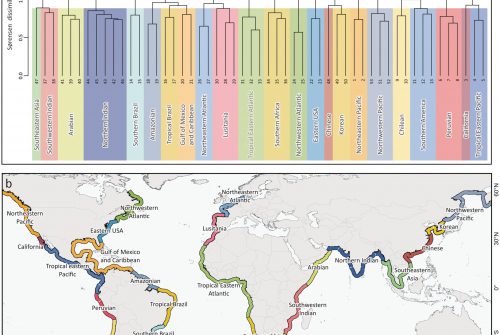
Knowledge of the spatial distribution of fish assemblages biodiversity and structure is essential for prioritizing areas of conservation. Here we describe the biodiversity and community structure of demersal fish assemblages and their habitat along the northeast Brazilian coast by combining bottom trawl data and underwater footage. Species composition was estimated by number and weight, while patterns of dominance were obtained based on frequency of occurrence and relative abundance. A total of 7235 individuals (830 kg), distributed in 24 orders, 49 families and 120 species were collected. Community structure was investigated through clustering analysis and by a non-metric multidimensional scaling technique. Finally, diversity was assessed based on six indices. Four major assemblages were identified, mainly associated with habitat type and depth range. The higher values of richness were found in sand substrate with rocks, coralline formations and sponges (SWCR) habitats, while higher values of diversity were found in habitats located on shallow waters (10-30 m). Further, assemblages associated with sponge-reef formations presented the highest values of richness and diversity. In management strategies of conservation, we thus recommend giving special attention on SWCR habitats, mainly those located on depths between 30 and 60 m. This can be achieved by an offshore expansion of existing MPAs and/or by the creation of new MPAs encompassing those environments.
DOI: 10.1016/j.csr.2018.07.002
Reference
Eduardo L.N., Frédou T., Souza Lira A., Padovani Ferreira B., Bertrand A., Ménard F., Lucena Frédou F. 2018. Identifying key habitat and spatial patterns of fish biodiversity in the tropical Brazilian continental shelf. Continental Shelf Research, 166: 108-118. DOI: 10.1016/j.csr.2018.07.002
Keywords
Demersal fish assemblage, Northeast Brazilian coast, Underwater footages, Fish assemblage structure, Marine Protected Areas, Habitat composition
| Affiliation: | AA(Departamento de Pesca e Aquicultura, Universidade Federal Rural de Pernambuco, Rua D. Manuel de Medeiros, sn, Dois irmãos, CEP 52171-900 Recife, PE, Brazil leandronole@hotmail.com), AB(Departamento de Pesca e Aquicultura, Universidade Federal Rural de Pernambuco, Rua D. Manuel de Medeiros, sn, Dois irmãos, CEP 52171-900 Recife, PE, Brazil), AC(Departamento de Pesca e Aquicultura, Universidade Federal Rural de Pernambuco, Rua D. Manuel de Medeiros, sn, Dois irmãos, CEP 52171-900 Recife, PE, Brazil), AD(Universidade Federal de Pernambuco, Departamento de Oceanografia, Recife, PE, Brazil), AE(Departamento de Pesca e Aquicultura, Universidade Federal Rural de Pernambuco, Rua D. Manuel de Medeiros, sn, Dois irmãos, CEP 52171-900 Recife, PE, Brazil; Universidade Federal de Pernambuco, Departamento de Oceanografia, Recife, PE, Brazil), AF(Aix Marseille Univ, Univ Toulon, CNRS, IRD, MIO, Marseille, France), AG(Departamento de Pesca e Aquicultura, Universidade Federal Rural de Pernambuco, Rua D. Manuel de Medeiros, sn, Dois irmãos, CEP 52171-900 Recife, PE, Brazil) | |
| Publication: | Continental Shelf Research, Volume 166, p. 108-118. |



